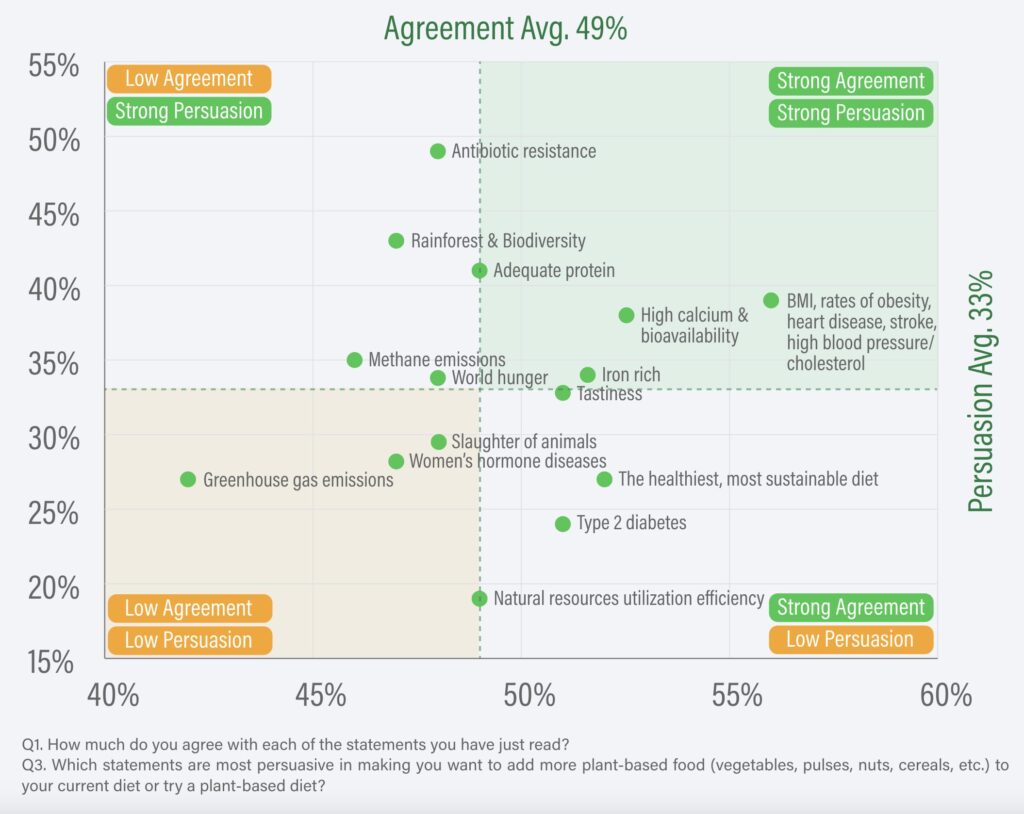China is Eating More Protein Than the US Now, With Focus on Health & Plant-Based Foods
4 Mins Read
UN figures show that Chinese people are eating more protein than Americans, a majority of which comes from plant-based sources.
China now consumes more protein per capita than people in the US, according to the latest data from the UN Food and Agriculture Organization (FAO). But while this is dominated by plant-based sources, meat consumption is set to rise, highlighting why the government is batting for alternative proteins.
As reported by the South China Morning Post, Chinese nationals ate 124.61g of protein per capita in 2021, surpassing Americans’ daily supply of 124.33g. This is according to the FAO’s food balance sheets, which measure national protein supply based on the amount produced as well as imported, estimating how much is potentially available for consumption.
Protein consumption is an indicator of food security and quality of life, and China’s efforts to gain ground with the US have been long in the making. But given the size of its population, scholars and leaders (including Barack Obama) have previously been apprehensive about what such consumption levels would mean for the environment.
China’s increasing protein supply isn’t just thanks to imports – the country has ramped up intensive animal agriculture, and is now the world’s largest aquaculture producer. However, its citizens have also upped their plant protein intake (unlike their counterparts in the US), and climate concerns have pushed its government to encourage plant-based consumption and alternative protein production.
Plant-based foods dominate China’s protein supply

In the US, 69% of the protein supply in 2021 came from animal sources, such as meat, fish, eggs and dairy. But China’s supply of animal proteins was around half of America’s, instead being dominated by plant-based foods.
Vegetables, fruits, beans, nuts and seeds – as well as wheat, oats, rice, barley, maize and their products – made up 60.5% of China’s protein. Its per capita consumption increased by 15.81g between 2010 and 2021, around two-thirds of which came from plant-based sources. In contrast, nearly all of the corresponding 5.31g increase in the US was derived from animal products.
The FAO food balance sheets showed that China’s top 10 protein providers were wheat and rice and their products, followed by vegetables, pork, poultry, eggs, freshwater fish, soybeans, groundnuts, and milk (excluding butter).
Overall, with 145.62g per capita, Iceland topped the world’s protein supply, while the Democratic Republic of Congo had the lowest at 28.59g. Daily per capita protein consumption hit 91.99g in Japan, 108.31g in South Korea, 113.63g in the UAE, and 119.55g in Australia.
The report also highlighted the protein deficiency in India – which last year overtook China as the most populous nation – with only 70.52g of per capita supply in 2021. Meanwhile, among the other top five populous countries, Indonesia reached 79.75g, Pakistan had 70.77g, and Nigeria 59.08g.
Consumers embracing plant-based for health

Despite sourcing a majority of its protein from plants, China is still the world’s largest meat consumer, accounting for 28% of global intake in 2023 (nearly twice as high as the next on the list, the US), as per data by the FAO and the Organisation for Economic Co-operation and Development. By the end of the decade, China’s meat consumption could be up by 21% from 2010 levels.
Its population is four times higher than that of the US, but while the latter’s share of global meat intake is set to increase in the next decade, China’s percentage will decline. This is thanks to growing awareness around the impact of meat production among consumers – 1kg of soybeans provides 56% more protein and generates 48% fewer emissions than the same amount of beef.
While a February 2024 study found that preference for plant-based foods is low in countries like Japan, Vietnam and China, a more recent survey suggests that when Chinese consumers are informed of the benefits of a vegan diet, 98% say they’ll eat more of these foods. This is driven by the country’s large flexitarian population, making up a third of the total.
The major factor behind these intentions is health. Seven of the top 10 statements about plant-based benefits that Chinese consumers agreed with were related to health and nutrition, including that vegan diets lower BMI and obesity rates (56%), are high in calcium and bioavailability (52% agreement), provide adequate protein (49%), and are iron-rich (51%).
China’s government has also been encouraging people to eat fewer animal products and more plant proteins, and recommends including vegetables in every meal and having daily servings of soy and grain products. In 2016, it introduced the Healthy China 2030 policy, which outlined that public health should be a precondition for all future socioeconomic development.
Meanwhile, in December 2021, the country’s 14th five-year plan for agricultural and rural tech development called for research in cultivated meat, synthetic egg and dairy, and recombinant proteins. And in May 2022, the five-year plan for bioeconomy development highlighted an advancement of man-made protein and novel foods – two months after President Xi Jinping called for a Grand Food Vision that included plant-based and microorganism-derived protein sources.
This is crucial for China’s climate goals. As part of its 30-60 policy, the nation aims to hit peak emissions by 2030 and become carbon-neutral by 2060. But by this year, half of all proteins consumed in the country must come from alternative sources if it is to meet the 1.5° goal, one study has found.



